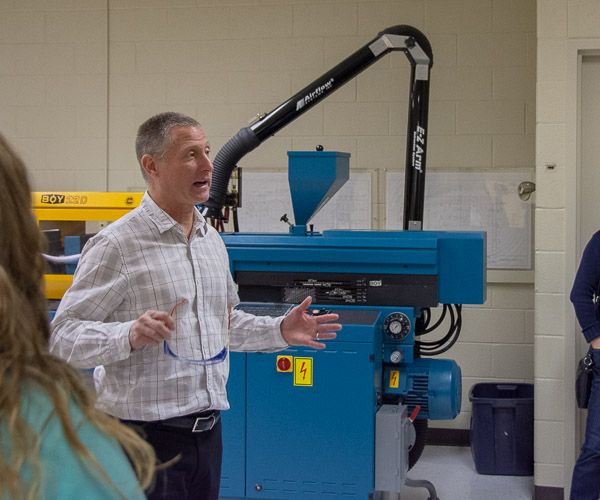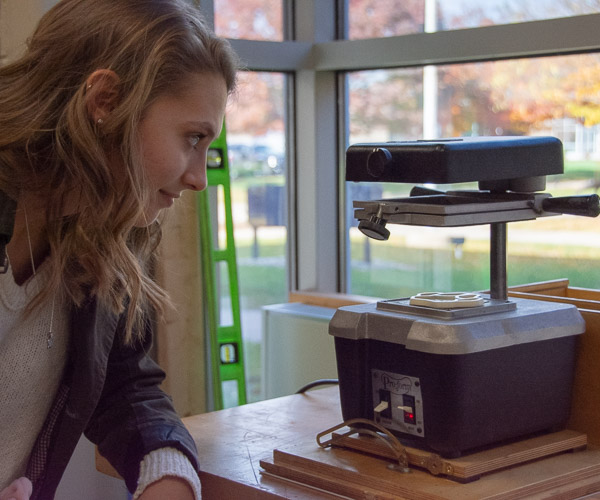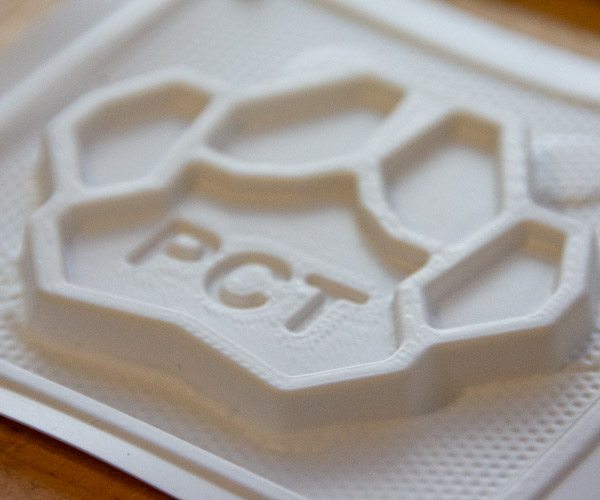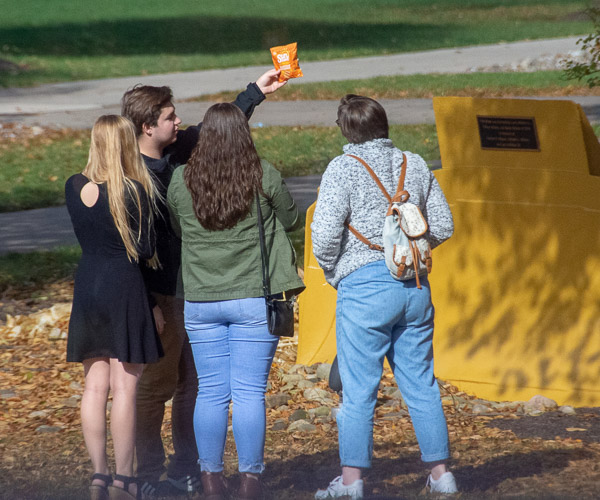“STEM” is short for science, technology, engineering and mathematics.
“In an ever-changing, increasingly complex world, it’s more important than ever that our nation’s youth are prepared to bring knowledge and skills to solve problems, make sense of information, and know how to gather and evaluate evidence to make decisions,” says the U.S. Department of Education’s Office of Innovation & Improvement. “These are the kinds of skills that students develop in science, technology, engineering and math.”
 Penn College’s “Focus on the Future” STEM Day activities were designed to give ninth- to 12th-grade students a hands-on glimpse of in-demand STEM-related careers. Students attended sessions in digital marketing and social media, plastics and polymer engineering technology, and information technology.
Penn College’s “Focus on the Future” STEM Day activities were designed to give ninth- to 12th-grade students a hands-on glimpse of in-demand STEM-related careers. Students attended sessions in digital marketing and social media, plastics and polymer engineering technology, and information technology.Participants represented Commonwealth Charter Academy, Columbia-Montour Area Vocational-Technical School, Jersey Shore Area School District, Lycoming Career & Technology Center, Pittston Area School District and Selinsgrove Area School District.
“STEM Day is a great way for Penn College to introduce high school students to the STEM fields, and in particular programs that drive the economy but are largely ‘hidden,’” said Bradley M. Webb, assistant dean of industrial, computing and engineering technologies. “For example, all three programs highlighted today are essential for the development, manufacturing and marketing of the smartphone most students had in their pocket, which has, in turn, transformed the way we engage with information.”
The first National STEM Day was implemented on Nov. 8, 2015, by toy company MGA Entertainment in conjunction with its dolls and accompanying Netflix series that feature four smart girls who are part of a spy organization called NOV8 (pronounced "innovate").
For information about Penn College, a national leader in applied technology education and workforce development, email the Admissions Office or call toll-free 800-367-9222.
– Photos by Jennifer A. Cline, writer/magazine editor

In an injection molding lab, Kirk M. Cantor, professor of plastics technology, introduces a group to the field plastics and polymer engineering technology.

A student contemplates how he will instruct an Ozobot.

On a small-scale thermoformer, a high school student watches a thin sheet of plastic change properties as it reaches the ideal temperature to form it around a cat’s paw mold …

… resulting in a take-home souvenir of her learning.

During a session on digital marketing and social media, students are given a product – a bagged snack – and tasked with creating a catchy Instagram post to promote it.